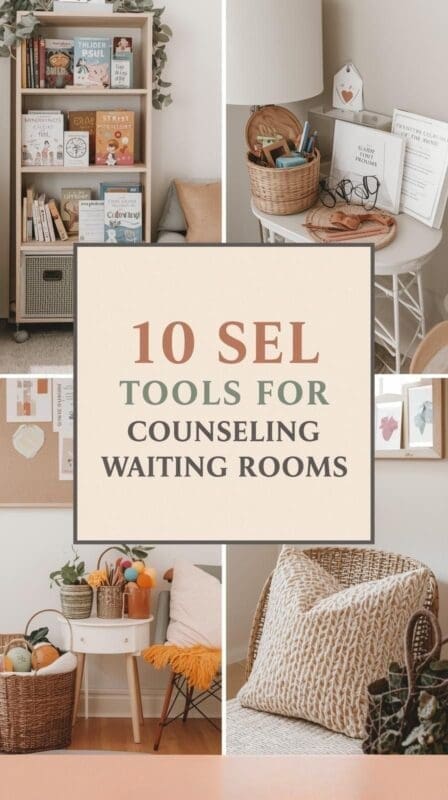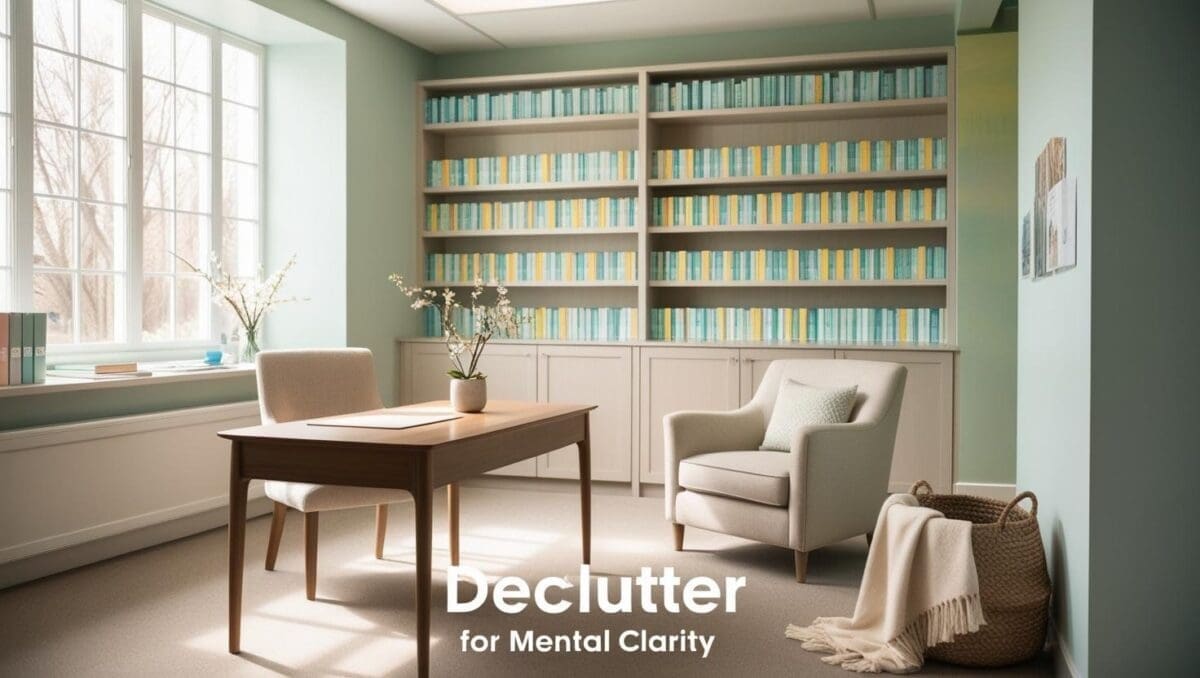The therapy waiting room sets the tone before a session even begins. For children, it can feel intimidating to wait, especially if they’re nervous, restless, or unsure of what to expect. With the right social-emotional learning (SEL) tools, you can transform your waiting area into a calm, engaging, and therapeutic space.
From worksheets to fidget baskets, here are waiting room SEL tools that support emotional regulation, reduce anxiety, and make every child feel welcome.
Why SEL Tools Matter in Waiting Rooms
- Reduce Anxiety: Having something to do helps children relax before their session.
- Practice Skills: SEL tools turn downtime into opportunities for growth.
- Set the Tone: A calming, intentional space communicates that emotions are safe here.
- Support Parents: Engaged kids give caregivers a moment to breathe.
1. SEL Worksheets and Coloring Pages
What to include:
- Emotion wheels for identifying feelings.
- Gratitude prompts: “One thing I’m thankful for today…”
- Mindfulness coloring sheets with calming mandalas or seasonal designs.
Why it works: Worksheets invite reflection and creativity, giving children quiet focus before sessions.
Tip: Keep clipboards or small lap desks handy so kids can work comfortably.
2. Fidget Baskets
What to include:
- Stress balls, therapy putty, squishy toys.
- Textured items like sensory stones or soft fabric swatches.
- Small pop-its for tactile focus.
Why it works: Fidgets help children release nervous energy and regulate before entering session.
Tip: Place baskets on low shelves so kids can choose items independently.
3. Emotion Boards & Posters
What to include:
- Feelings charts with faces or emojis.
- “How are you feeling today?” magnets or velcro pieces kids can move.
Why it works: Visual prompts normalize talking about emotions and prepare kids to share in session.
Tip: Rotate posters seasonally to keep them engaging.
4. Gratitude & Kindness Corners
What to include:
- A gratitude jar where children can drop notes.
- A kindness wall with sticky notes sharing kind acts they’ve done or seen.
Why it works: Builds a community feel and reinforces positive emotion practices.
Tip: Invite kids to read a few before session to inspire reflection.
5. Cozy Reading Nook
What to include:
- Books about feelings, mindfulness, kindness, or friendship.
- Soft seating like beanbags, cushions, or small armchairs.
Why it works: Storytelling creates a calming ritual and models emotional literacy.
Tip: Stock books in multiple languages if possible for inclusivity.
6. Quiet Activity Corners
What to include:
- Puzzles, magnetic tiles, or stacking games.
- Small sensory bins with calming themes (like “winter snow” with cotton balls and scoops).
Why it works: Play-based engagement encourages focus and relaxation without overstimulation.
Tip: Keep activities open-ended and simple to minimize cleanup.
7. Calming Decor Elements
What to include:
- Warm lighting (cordless lamps, fairy lights).
- Plants for a natural, grounding effect.
- Soft textures (pillows, rugs) for comfort.
Why it works: The environment itself becomes part of the SEL support.
Tip: Neutral colors with soft accents reduce overstimulation and create a professional feel.
Final Thoughts
A therapy waiting room isn’t just a holding space — it’s the first step in the therapeutic process. By adding worksheets, fidgets, gratitude jars, and cozy corners, you give children a safe place to begin calming their bodies and minds before session.
Even small touches can transform waiting time into meaningful SEL practice.
For more inspiration, explore my guides on Therapy Tools for Emotional Regulation and Child Therapy Office Decor Ideas.

About the Author
Hi, I’m Eve, a former school counselor with a master’s degree in School Psychology and a passionate advocate for children and families navigating sensory challenges. As a mom of children with sensory sensitivities, I deeply understand the journey special-needs parents face, and I dedicate myself to researching and sharing practical solutions to help children thrive and feel comfortable in their bodies. My goal is also to empower counselors, therapists, and psychologists with creative strategies and supportive resources to enrich their everyday practice. When I’m not writing or exploring new therapeutic approaches, you’ll find me spending quality time with my family and continually seeking inspiration from everyday moments.



